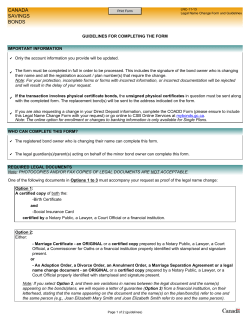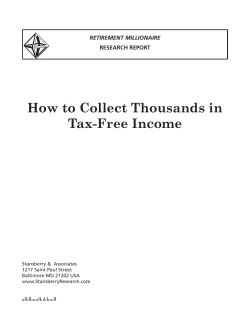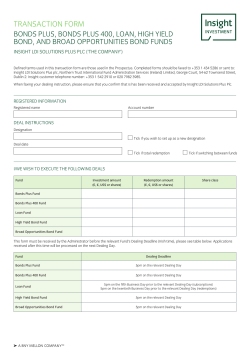
Corporate Bonds on Bloomberg News
Corporate Bonds on Bloomberg
News This guide briefly describes finding how to find Bloomberg News on bonds. NN is
the main menu for corp news. TOP and NI are two frequently used news search commands.
You can add news categories to retrieve news that interest you. Here are some examples.
TOP BON Today’s top BOND headlines NI BON Global Bond Market News NI
BONTOP Global TOP Bond News NI COR Global Corporate Bonds NI GBN Global
Government Bonds NI USB US Bonds NI EBN Eurobonds NI GILT UK Gilts NI FIMR
Fixed Income Market Reports NI BONWATCH or NI BONDALERT Pending New
Issues News
New Issues Type NIM <Go> for the New Issue Monitor function. NIM displays real-time
deals and monitors corporate securities, 144As, and private placements. At the top of the
screen are several predefined searches such as U.S. Bond Market, Eurobond Market and
Japanese Domestic Market. The options in the middle of the screen enable you to create up
to 10 custom searches based on criteria that you define. Click Create Selection under
Custom Selections, you will see following screen.
Enter a name for your search in the Custom Selection field, and press <Go>. Select 1Bonds, and then press MENU for main menu. You can also search for other types of
products. Click on Country, select a country, e.g. United States and press <MENU>. Click
on Currency, select U.S. Dollar and press <MENU>. Moody’s and Standard & Poor’s
ratings are available. For more information about rating scale, type RATD <Go>. Click on
News, select No News and press <MENU>. Click on Maturity Type, select callable and
press <MENU>. Then type 1 <Go> or click on Begin Monitoring to run your search and
display new U.S. issues. To change the types of information that are displayed about the
bonds—such as coupon, spread and lead underwriter—click on Screen Display on the
custom selection screen and select a new group of display categories.
Click an issue to more information. Below is the description of Principal Life PFQ 6
05/16/16 <corp>. On the right side of the screen, there is more information about the issue.
To check the credit-rating history and the rating outlook of a particular issue or issuer,
type CRPR <Go>. To screen companies with credit ratings under revision—or to
screen for other companies in the same industry that have credit-rating problems—
type RATC <Go>.
Bond Search
Use SRCH to create up to 30 custom searches for government, corporate, and private
securities. You can search by coupon, maturity, country, and currency, among others.
SRCH displays up to 5,000 securities based on your criteria.
In above screen, a search for bonds issued by IBM, GE and BAC with coupon rate range
from 4-12%, maturity date range from 2004 to 2010 with Moody’s A1 ratings or above in
the United States will be performed. First enter tickers in each box, coupon range and date
range. Then select USD for currency and United States from dropdown menu. Click the
Edit button for Moody’s ratings and check ratings that are above A1, and then press
Update. Click Save to save the search. Then click Search. You will see following screen.
If you left click on the ticker, you will see a list of commands you can perform on the ticker.
We are interested in exporting data to Excel sheet, so that we can analyze data further. But
you can’t export data directly to Excel. One way is to export data to Worksheet and then to
Excel. Here are the steps.
Select Export to NW from Options dropdown menu. Then select 2) Replace an Existing
Worksheet. Note that maximum number of securities in a worksheet is 500. Then select a
worksheet and it will say that Securities have been saved successfully.
Type NW on the top left corner of the screen, and select the worksheet where you just
saved the data.
Select Excel via API links from Options button, and data will be loaded in Excel in a few
seconds.
Advanced Search Go back to SRCH, click Advanced Search on the right side of the menu
bar, as indicated in the first screen shot for SRCH on page 3. You can choose specific
criterion to create a custom search, name and save your search, edit the columns, e-mail
your search, and access other saved templates.
It has much more options for narrowing down searches. Most of them are self-explanatory.
Let’s examine Other. You can exclude or include private placement. Let’s examine the
Include bonds no longer outstanding option.
By default, Bloomberg only lists outstanding bonds, but one often wants to look up bonds
that already matured. Unfortunately Bloomberg does not have pricing data for matured
bonds have. Click Save to save the search. Then click Search.
From the toolbar, you can Edit Columns and export data to Excel directly with a limit
of 1000 securities. You can also save the results in Saved Searches.
Yield & Spread Analysis (YAS) Now let’s switch gear to introduce several tools to analyze
corporate bonds. The Yield & Spread Analysis (YAS) allows you to quickly analyze a
corporate bond’s yield spread and interest rate sensitivity. The function incorporates five
important bond analytics on one screen. For example, type IBM 5.375 02/01/09 <Corp>
YAS <Go>, as shown below. YAS enables you to perform traditional yield analysis versus
a selected benchmark (type 1 <Go> or YA <Go>) as well as more-sophisticated analyses
such as option-adjusted spread (type 3 <Go> or OAS <Go>) and asset swap (type 4 <Go>
or ASW <Go>) calculations. YAS also displays spreads to an interpolated point on a yield
curve, duration and convexity measures, cost-of-carry information based on repo rates and
forward pricing and settlement figures. Type 2 <Go> or YASD <Go> to change your
personal defaults for all functions related to yield and spread analysis. You can use the
other benchmark bond rather than a current benchmark —3 year T 4.25 02/15/09 and
you’ll see that the spread will change from 30 basis points.
Fair Market Value You might now want to analyze the fair value of our sample IBM bond.
The current credit rating of this security is A1, and you could normally find out its fair price
by comparing it with its rating peers. Type <Corp> FMC <Go> for a menu of fair market
curves. Select US dollar. Then enter 5 in the CURVE #1 field and type <Go> 1 <Go>.
Curve #5 is created from A+-rated industrial corporate bonds in the same currency. You
can use the Fair Market Yield Curve Spreads (FMCS) function to find spreads between
different sectors and credit-rated curves.
Type BFV <Go> for the Bloomberg Fair Value function. BFV shows the theoretical value
of the IBM issue based on where other bonds in the same industry and with the same credit
rating are trading.
Relative Value To see how that spread developed over time by running the IBM bond’s
history against the underlying historical yield of the government curve, type RVM <Go>.
Of course, it might be argued that the yield spread of a corporate bond against government
bonds can be somewhat misleading because government bond yields can be artificially low
due to a lack of supply as governments borrow less. A better benchmark to use for
historical purposes may thus be the swap curve, which is not affected by supply shortages,
because swaps are created by contractual agreement. To view the historical yield spread
between the corporate bond and the underlying swap curve, type RVS <Go>.
Total Return Analysis Use TRA to display total return analysis for the IBM bond versus a
comparable risk-free benchmark bond given various interest rate scenarios. You can also
use TRA to perform convexity and duration analysis. TRA allows you to change
assumptions such as horizon date and reinvestment rate, so you can better determine
projected total return in different interest rate environments.
HS function determines the historical spread relationship between two bonds. To access:
{ticker symbol} <yellow key> {ticker symbol} <yellow key> HS <Go>. Type GT3
<Govt> IBM 5.375 02/09 <Corp> HS <Go> to compare the spread between, for example,
the generic three-year U.S. Treasury bond and the IBM bond. You can use the Historical
Yield Spread function to determine whether the spread between the bonds is high or low
compared with recent historical values. The graph in the middle of the screen displays the
yield spread. The red box at the right of the graph provides statistics such as average and
median spread. The spread data summary at the lower left can help you determine a good
entry or exit point for a trade. Press <Page Fwd> for the individual yield graphs of both
securities. Press <Page Fwd> again to display the underlying data in tabular form.
Cost of Carry Use COC to analyze the purchase of a selected security with borrowed funds
(repo) or the borrowing of a security by lending out funds (reverse repo). COC allows you
to quickly view the basis point spread, price pick-up, net profit/loss, and the break-even
price and yield for a given repo agreement so, that you can measure the net profit or loss
incurred by entering into these transactions.
Institutional and insider holdings Use PHDC/HDS to search for institutional and insider
holders whose trading activity may influence the price of a selected security. You can use
PHDC/HDS to discover which investors are building or unwinding positions.
LEAG/LALT
Use LEAG/LALT to list underwriter/legal adviser rankings for the fixed income,
equity, equity-linked and syndicated loan markets. Create market searches so you can
examine the leading underwriters/legal advisers in a specific market (debt and equity)
or industry sector and evaluate where they stand relative to competitors. You can
choose specific search criteria to create custom ranking tables using market variables,
date ranges, and/or specific underwriters/legal advisers.
RATC Company Credit Rating Revisions Monitor allows you to quickly scan the credit
markets to search for recent ratings changes. You can create up to twenty customized
search templates based on criteria such as debt program type, rating agency, Credit Quality
(e.g. High Grade vs. High Yield), Industry Sector, Country of Issuance as well as the type
of change (e.g. Upgrade / Downgrade). Use RATD to display rate scales and definitions.
Data download via Excel API Though there is no pricing information available for matured
bonds, you can get
maturity, coupon and many other data fields through table wizard
on the
. For example below is data for BANK
Bloomberg toolbar
OF AMERICA BAC 5.6 11/16/04 with CUSIP 060505BE3.
You can get price information for current bonds through table wizard. Whenever you see a
push pin
on the top right corner of the screen, you can drag and drop it to Table Wizard of the
Bloomberg Excel API, so that you can download data to spreadsheet. Please refer to
other guides on Excel API for instructions.
This is by no means a complete list of functions for bond analytics. Please go to <CORP>
screen for a menu of tools available for bonds. Remember to press <help> to learn more
about each command. Please go to Bloomberg Help page at
http://firestone.princeton.edu/econlib/blp/bloomberg.htm for other guides.
© Copyright 2025





















